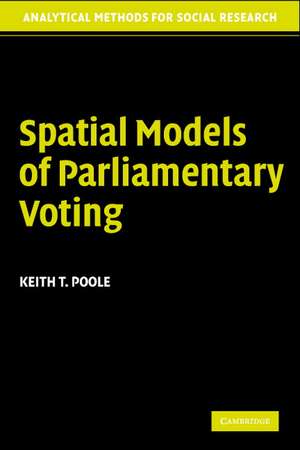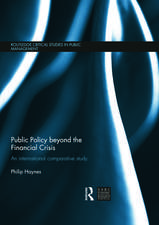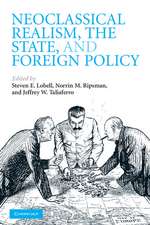Spatial Models of Parliamentary Voting: Analytical Methods for Social Research
Autor Keith T. Pooleen Limba Engleză Paperback – 10 apr 2005
| Toate formatele și edițiile | Preț | Express |
|---|---|---|
| Paperback (1) | 276.76 lei 43-57 zile | |
| Cambridge University Press – 10 apr 2005 | 276.76 lei 43-57 zile | |
| Hardback (1) | 640.56 lei 43-57 zile | |
| Cambridge University Press – 10 apr 2005 | 640.56 lei 43-57 zile |
Preț: 276.76 lei
Nou
Puncte Express: 415
Preț estimativ în valută:
52.97€ • 57.56$ • 44.53£
52.97€ • 57.56$ • 44.53£
Carte tipărită la comandă
Livrare economică 21 aprilie-05 mai
Preluare comenzi: 021 569.72.76
Specificații
ISBN-13: 9780521617475
ISBN-10: 0521617472
Pagini: 248
Ilustrații: 62 b/w illus. 8 tables
Dimensiuni: 152 x 228 x 19 mm
Greutate: 0.34 kg
Editura: Cambridge University Press
Colecția Cambridge University Press
Seria Analytical Methods for Social Research
Locul publicării:New York, United States
ISBN-10: 0521617472
Pagini: 248
Ilustrații: 62 b/w illus. 8 tables
Dimensiuni: 152 x 228 x 19 mm
Greutate: 0.34 kg
Editura: Cambridge University Press
Colecția Cambridge University Press
Seria Analytical Methods for Social Research
Locul publicării:New York, United States
Cuprins
1. Introduction; 2. The geometry of parliamentary roll call voting; 3. The optimal classification method; 4. Probabilistic spatial models of parliamentary voting; 5. Practical issues in computing spatial models of parliamentary voting; 6. Conducting natural experiments with role calls; 7. Conclusion.
Recenzii
'This book achieves its aim of explaining how to build a spatial model and will be essential reading for those engaged in that, while still being readable and related well to real politics.' Political Studies Review
Notă biografică
Descriere
This book presents a simple geometric voting model for analyzing parliamentary roll call data.































